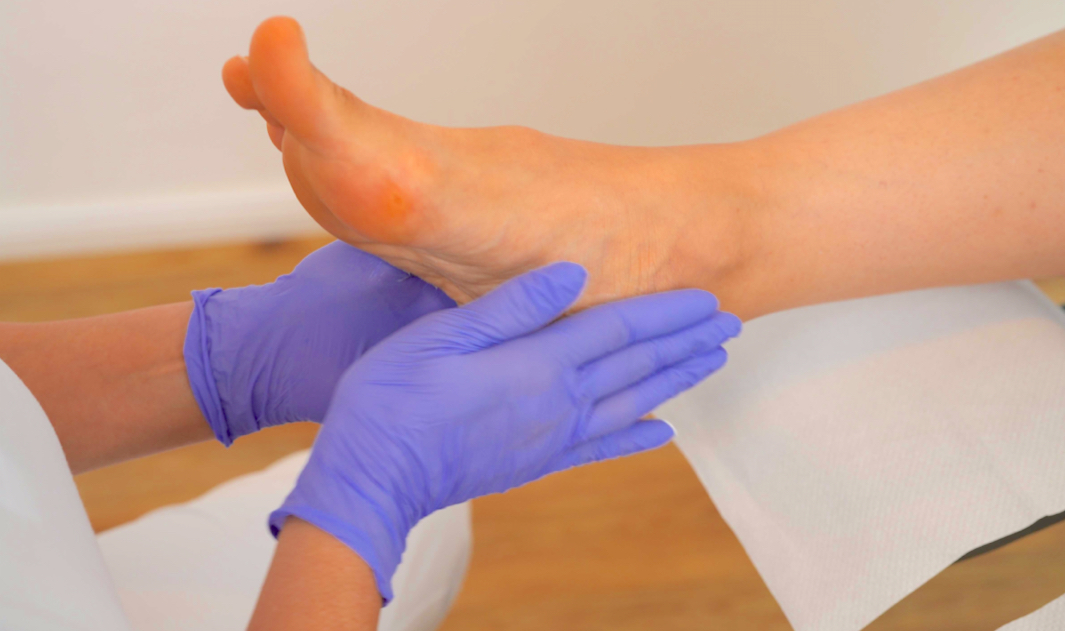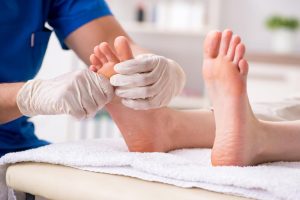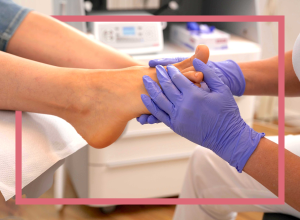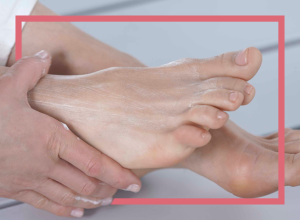Walking barefoot or heavy use of the hands is enough to stimulate the formation of calluses. A completely natural process. The increased production of callus cells is intended to make the skin more resistant to external influences.
If, on the other hand, there is a strong thickening, this leads to very dry and hard skin areas. This is known as hyperkeratosis. We explain here when hyperkeratosis is present. Also the question: What is hyperkeratosis? The symptoms and effects.
When can hyperkeratosis occur?
The formation of cornea is a completely natural process to protect against external influences. If the body forms more cells, it should initially increase resistance. However, if too many skin cells are formed and they do not shed quickly enough, this can result in hyperkeratosis, also known as ichthyosis.
Hyperkeratosis is not that rare. Podiatrists are familiar with this problem. This is because it usually results in an increased production of keratin. Keratin is a natural protein that binds the cells together when it is overproduced. The result is excessive keratinization in the affected area. The appearance is often thickened, dry and flaky skin. This can be visible on the feet, but also on other parts of the body.
If the keratinization takes on unhealthy characteristics, the doctor speaks of disorders and keratosis. Many people may also know it as chafing skin. In this case, a cosmetic problem becomes a case for the expert; medical pedicure.
Symptoms and effects of hyperkeratosis
A distinction can be made between different forms of hyperkeratosis:
Smooth hyperkeratosis
This usually occurs on heavily stressed areas of the skin, for example due to excessive pressure or constant friction. A disturbance or improvement in the blood circulation of the skin can lead to an increase in cell division. The top layer of the epidermis cannot keep up with the shedding of old skin cells. This leads to an accumulation and keratinization.
The tearing hyperkeratosis
If the often very dry and very thickened areas of skin tear open, urgent action must be taken. These areas form entry points for pathogens and therefore an increased risk of infection. This is also referred to as rhagades or fissures. These usually occur on the ball of the foot and heel, but can also occur on other parts of the body depending on individual overload.
If no action is taken, it can be very painful for those affected. In some cases, walking can also become difficult as a result.
Keratosis pilaris
This leads to excessive keratinization of the hair follicles. These can be clearly felt and seen. The appearance has also led to the terms “chafing skin” or “strawberry skin”. This usually appears on the legs and arms.
Calluses and corns
In both of these cases, there is a localized, usually sharply defined keratinization of the skin. If the affected areas have previously been exposed to constant pressure or friction, such a formation can occur. This often develops unnoticed at first. However, pressure situations can lead to pain, and those affected only notice it when it is already too late. These can occur most frequently on the hands and feet.
The causes of hyperkeratosis are often the same. For example, heavy mechanical stress, misalignment or an illness, the use of certain medications, a genetic predisposition or even incorrect skin or foot care can promote excessive keratinization of the skin.
Hyperkeratosis in diabetes diseases
Diabetes mellitus is a metabolic disorder which, among other things, also leads to a disruption of the skin barrier. It is not uncommon for diabetics to suffer from impaired haptic perception and therefore only notice changes to the skin very late, and often too late. As a result, pressure points are not relieved but continue to be stressed. The result is a worsening of the problem skin.
In many cases, the skin on the feet is affected. Pathogens often penetrate unnoticed, causing inflammation on fissures or pressure points and can lead to problems including diabetic foot syndrome. Comprehensive education and prevention can help here. This is why it is so important for diabetics to act in good time. A daily inspection and adequate care of the feet are sometimes crucial. Further tips and steps for foot care can also be found here in our article: The right foot care for diabetes mellitus.
Act in good time and correctly
Urea (urea) is a natural moisturizing factor for the skin and protects it from drying out. In slightly higher concentrations, it also has a desquamating, callus-dissolving effect. Spirularin SR chapped skin cream also makes use of this. The moisturizing cream also protects against external influences with the microalgae active ingredient spiralin. Experts recommend switching to Spirularin HF Mousse or HF Gel after using the chapped skin cream for approx. 2 weeks. In this way, the moisture in the skin can be preserved and protected against the formation of new calluses.
Do you have any questions for our experts? Feel free to send an e-mail to: info(at)ocean-pharma.de. Our experts will be happy to give you tips on healthy feet and the right foot care. Alternatively, you can find further advice in our expert tips on all aspects of foot and skin health, in addition to the current article: What is hyperkeratosis? The symptoms and effects.
Image source: ocean pharma GmbH
Experten-Tipp entstand in Zusammenarbeit mit:

Anke Niederau
Anke Niederau has been self-employed in medical foot care since 1990. Among other things, she has completed further training on the subject of "reflexology work on the foot" and as a diabetic podiatrist DDG. She is also the author of the bestseller "Das große Buch der Nagelerkrankungen".
Until 2005, she worked as a lecturer in medical foot care at the Düsseldorf Chamber of Crafts and until 2006 as a teacher at the Kaiserswerther Diakonie specialist school for podiatry. Since 2007, the author has worked as a freelance lecturer at various podiatry and chiropody schools.






